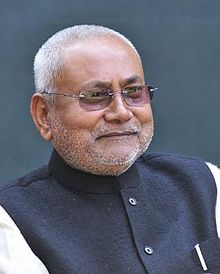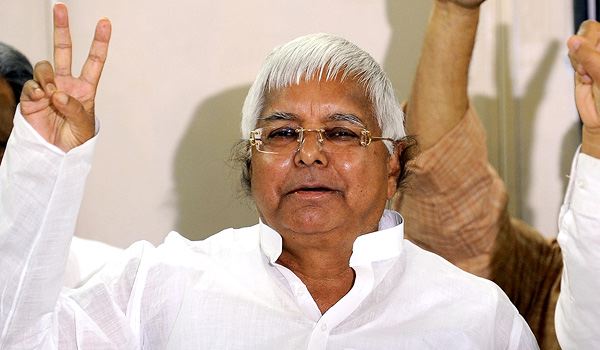
On November 6, earlier this month, the Narendra Modi government decided to implement a Swacch Bharat cess. The cess amounts to 0.5% on all services, and has pushed up the effective rate of service tax to 14.5%, from the earlier 14%. The cess has come into effect from yesterday i.e. November 15, 2015.
The first question that needs to be asked is how much money will the cess end up raising for the government? During the first seven months of this financial year between April and October 2015, the service tax collections have grown at an excellent pace of 26%.
The total service tax collected during the period stands at Rs 1,12,727 crore. If the government continues collecting service tax at this pace, it will end up with around Rs 2,11,846 crore (1.26 x Rs 1,68,132 crore, which was the total amount of service tax collected last year).
At a service tax rate of 14%, this would mean that an income of Rs 15,13,186 crore will be taxed (Rs 2,11,846 crore divided by 14%). A Swacch Bharat cess of 0.5% would amount to a total of Rs 7,566 crore (0.5% of Rs 15,13,186 crore) collected during the course of the year. But the cess will be collected only for a period of 4.5 months during the course of the year (between mid-November and end March). Once that is taken into account then the amount likely to be collected through the Swacch Bharat cess will be around Rs 2,837 crore. (This is a simple calculation which doesn’t go into technicalities which arise with any kind of tax collection).
Also, given that more tax is collected during the last few months of the financial year, the number is likely to be higher than this. This calculation works with the assumption that the tax collections are distributed equally through the year, which is not totally correct.
Over the last few days, I have come across news-reports which suggest that the government will be able to collect only Rs 400 crore through the Swacch Bharat cess. This is incorrect.
As a PTI newsreport points out: “The additional cess would be over and above the 14 per cent Service Tax rate which is already being levied and may yield the government an additional about Rs 400 crore during the remainder of the current fiscal.”
How did this calculation come about? As I mentioned earlier, the total service tax that is likely to be collected during the course of this year should be around Rs 2,11,846 crore. 0.5% of this amounts equals Rs 1,059 crore for the whole year. For a period of 4.5 months this amounts to Rs 397 crore, or around Rs 400 crore.
But there is a basic mistake in this calculation. The cess of 0.5% is on the total income and not on the total tax.
So that was the mathematical part of this column. Now let’s deal with the more important issues. Why has the government come up with a cess of 0.5% instead of increasing the service tax rate to 14.5%?
The financial impact of both would have been the same. The government would end up collecting the same amount of money. The answer lies in the fact that anything collected as a tax needs to be shared with the states. But anything collected as a cess remains with the central government. And that is why the government has come up with a cess amounting to 0.5%, instead of increasing the tax to 14.5%.
As the 14th finance commission report released earlier this year points out: “Almost all States have argued that cess and surcharges should form part of the divisible pool, with some suggesting that this should be done if cess and surcharges continue for more than three years.” But that is not how things stand currently.
Also, the money raised through the cess is to be allocated to the ministry of urban development and the ministry of drinking water and sanitation. The question is how well can a central government sitting in Delhi run a cleanliness drive across the country? Cleanliness ultimately remains a local issue and can be taken care of in a much better way if the governments at the local level are involved, which will not happen in this case.
The Swacch Bharat cess also goes against Narendra Modi’s pet theme of cooperative federalism, which talks about empowering the state governments. In a letter to chief ministers earlier this year, Modi had said: “This Government is…committed to the idea of empowering states in all possible ways. We also believe that states should be allowed to chalk out their programmes and schemes with greater financial strength and autonomy, while observing financial prudence and discipline.”
Further, should the government have come up with a cess more than half way through the year and ended up complicating the tax system further, in order to raise an amount of Rs 3,000 crore? The answer is no. (I am no tax expert but you can Google and read all kinds of articles which claim to clear all the doubts regarding the Swacch Bharat cess).
Rs 3,000 crore amounts to just 0.3% of the central government’s total share of revenue of Rs 9,19,842 crore, for this financial year. The government could have easily raised this small amount from other sources without complicating the tax system.
For example, it could have shut down MTNL which faced losses of Rs 2,000 crore during the course of the last financial year. Or it could have shut down many other hugely loss making public sector enterprises which India’s miniscule base of taxpayers continue to fund. After shutting down these enterprises, the government could have looked to sell the massive physical assets like land and building that these enterprises own. These sales can fund the Swacch Bharat campaign many times over in the years to come.
But that would mean working towards a smaller government, which Narendra Modi doesn’t seem to like, even though during the course of his election campaign last year he had promised “minimum government and maximum governance”. But what we have got up until now is nothing along the lines of what was promised.
As Arun Shourie told The Hindustan Times recently: “He doesn’t believe in disinvestment. This government has shown an almost criminal neglect in improving tax administration. His idea of development is to have a few large projects like the Sardar Patel statue, which turns out to be made in China, or a bullet train from Ahmedabad to Mumbai, rather than spend that money to improve the speed of all trains in India by 15 mph. He’s increasing the role of the state in everything. ‘Minimum government, maximum governance’ is just a slogan.””
And that is worrying.
The column originally appeared on The Daily Reckoning on Nov 16, 2015



